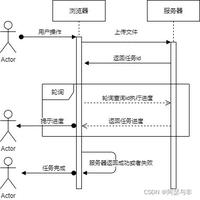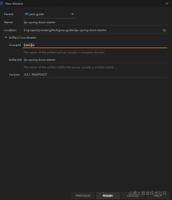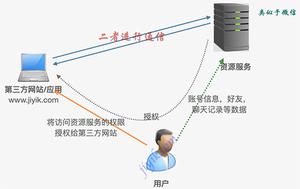Springboot错误处理机制实现原理解析
1.默认的错误机制
默认效果
①在浏览器中访问不存在的请求时,springboot默认返回一个空白页面
浏览器的请求头
②客户端访问时,返回json数据
{
"timestamp": "2020-03-24T02:49:56.572+0000",
"status": 404,
"error": "Not Found",
"message": "No message available",
"path": "/"
}
客户端访问的请求头
原理
可以参照 ErrorMvcAutoConfiguration 错误处理的自动配置
给容器中添加了以下组件
1.DefaultErrorAttributes
public Map<String, Object> getErrorAttributes(WebRequest webRequest, boolean includeStackTrace) {
Map<String, Object> errorAttributes = new LinkedHashMap();
errorAttributes.put("timestamp", new Date());
this.addStatus(errorAttributes, webRequest);
this.addErrorDetails(errorAttributes, webRequest, includeStackTrace);
this.addPath(errorAttributes, webRequest);
return errorAttributes;
}
@RequestMapping(
produces = {"text/html"}
)
public ModelAndView errorHtml(HttpServletRequest request, HttpServletResponse response) {
HttpStatus status = this.getStatus(request);
//处理页面的请求返回给前台数据 model 的获取 ,调用
Map<String, Object> model = Collections.unmodifiableMap(this.getErrorAttributes(request, this.isIncludeStackTrace(request, MediaType.TEXT_HTML)));
response.setStatus(status.value());
ModelAndView modelAndView = this.resolveErrorView(request, response, status, model);
return modelAndView != null ? modelAndView : new ModelAndView("error", model);
}
//调用 AbstractErrorController#getErrorAttributes
protected Map<String, Object> getErrorAttributes(HttpServletRequest request, boolean includeStackTrace) {
WebRequest webRequest = new ServletWebRequest(request);
return this.errorAttributes.getErrorAttributes(webRequest, includeStackTrace);
}
最终调用DefaultErrorAttributes#getErrorAttributes
public Map<String, Object> getErrorAttributes(WebRequest webRequest, boolean includeStackTrace) {
2.BasicErrorController : 处理默认的 /error 请求
@Controller
@RequestMapping({"${server.error.path:${error.path:/error}}"})
public class BasicErrorController extends AbstractErrorController {
private final ErrorProperties errorProperties;
public String getErrorPath() {
return this.errorProperties.getPath();
}
@RequestMapping(
produces = {"text/html"} //产生html类型的数据,浏览器发送的请求来到这个方法处理
)
public ModelAndView errorHtml(HttpServletRequest request, HttpServletResponse response) {
//获取状态码
HttpStatus status = this.getStatus(request);
//获取模型数据
Map<String, Object> model = Collections.unmodifiableMap(this.getErrorAttributes(request, this.isIncludeStackTrace(request, MediaType.TEXT_HTML)));
response.setStatus(status.value());
//去哪个页面作为错误页面,包括页面地址和内容
ModelAndView modelAndView = this.resolveErrorView(request, response, status, model);
return modelAndView != null ? modelAndView : new ModelAndView("error", model);
}
@RequestMapping //产生json类型的数据, 其他客户端发送的请求来到这个方法处理
public ResponseEntity<Map<String, Object>> error(HttpServletRequest request) {
HttpStatus status = this.getStatus(request);
if (status == HttpStatus.NO_CONTENT) {
return new ResponseEntity(status);
} else {
Map<String, Object> body = this.getErrorAttributes(request, this.isIncludeStackTrace(request, MediaType.ALL));
return new ResponseEntity(body, status);
}
}
3.ErrorPageCustomizer
public class ErrorProperties {
@Value("${error.path:/error}")
private String path = "/error"; //系统出现错误请求之后来到 /error 请求进行处理 ,(类似于以前 web.xml 中注册的错误页面规则)
4.DefaultErrorViewResolver
public ModelAndView resolveErrorView(HttpServletRequest request, HttpStatus status, Map<String, Object> model) {
ModelAndView modelAndView = this.resolve(String.valueOf(status.value()), model);
if (modelAndView == null && SERIES_VIEWS.containsKey(status.series())) {
modelAndView = this.resolve((String)SERIES_VIEWS.get(status.series()), model);
}
return modelAndView;
}
private ModelAndView resolve(String viewName, Map<String, Object> model) { //默认 springboot 可以找到这个页面 error/404
String errorViewName = "error/" + viewName; //模板引擎可以解析这个页面地址就用模板引擎解析
TemplateAvailabilityProvider provider = this.templateAvailabilityProviders.getProvider(errorViewName, this.applicationContext); //模板引擎可用的情况下就返回到 errorViewName 指定的视图地址
return provider != null ? new ModelAndView(errorViewName, model) : this.resolveResource(errorViewName, model);
}
//模板引擎不可用就在静态资源文件夹里面找 errorViewName 对应的页面 error/404.html
private ModelAndView resolveResource(String viewName, Map<String, Object> model) {
String[] var3 = this.resourceProperties.getStaticLocations();
int var4 = var3.length;
for(int var5 = 0; var5 < var4; ++var5) {
String location = var3[var5];
try {
Resource resource = this.applicationContext.getResource(location);
resource = resource.createRelative(viewName + ".html"); //如果静态资源文件中由 这个资源就直接使用,否则返回为空
if (resource.exists()) {
return new ModelAndView(new DefaultErrorViewResolver.HtmlResourceView(resource), model);
}
} catch (Exception var8) {
}
}
return null;
}
步骤:
一旦系统出现 4xx 或者 5xx 之类的错误,ErrorPageCustomizer 就会生效(定制错误的响应规则),就会来到 /error 请求,会被BasicErrorController
处理。
①响应页面 去哪个页面由 DefaultErrorViewResolver 决定
protected ModelAndView resolveErrorView(HttpServletRequest request, HttpServletResponse response, HttpStatus status, Map<String, Object> model) {
Iterator var5 = this.errorViewResolvers.iterator(); //解析所有的 ErrorViewResolver 得到 modelAndView
ModelAndView modelAndView;
do {
if (!var5.hasNext()) {
return null;
}
ErrorViewResolver resolver = (ErrorViewResolver)var5.next();
modelAndView = resolver.resolveErrorView(request, status, model);
} while(modelAndView == null);
return modelAndView;
}
2.错误信息的定制
①如何定制错误页面
1>有模板引擎的情况下: error/状态码 ;【将错误页面命名为 错误码.html 放在模板引擎文件夹下的 error 文件夹下】,发生此状态码的错误就来到
对应的页面;
我们可以使用 4xx 和 5xx 作为错误页面的文件名来匹配这种类型的所欲错误,精确优先(优先寻找精确的 状态码.html );
页面能够获取到的信息
timestamp :时间戳
status : 状态码
exception : 异常对象
message : 异常消息
errors : JSR303数据校验的错误都在这儿
2>.没有模板引擎(模板引擎找不到这个页面),静态资源文件夹下找
3>.以上都没有错误页面,就默认来到 springboot 默认的错误页面
②、自定义异常处理&返回定制json数据;
@ControllerAdvice
public class MyExceptionHandler {
@ResponseBody
@ExceptionHandler(UserNotExistException.class)
public Map<String,Object> handleException(Exception e){
Map<String,Object> map = new HashMap<>();
map.put("code","user.notexist");
map.put("message",e.getMessage());
return map;
}
}
//通过异常处理器,但没有自适应效果(浏览器返回页面,客户端访问返回json数据)
2)、转发到/error进行自适应响应效果处理
@RequestMapping(
produces = {"text/html"}
)
public ModelAndView errorHtml(HttpServletRequest request, HttpServletResponse response) { //获取错误的状态码,在分析的过程中,要注意参数从哪儿来? =======》前领导的一句话,哈哈……
HttpStatus status = this.getStatus(request);
Map<String, Object> model = Collections.unmodifiableMap(this.getErrorAttributes(request, this.isIncludeStackTrace(request, MediaType.TEXT_HTML)));
response.setStatus(status.value()); //依据错误状态码解析错误试图,如果直接转发,不指定错误状态码则试图解析出错(直接转发状态码为 200 ,到不了定制的 4xx 5xx 的页面)
ModelAndView modelAndView = this.resolveErrorView(request, response, status, model);
return modelAndView != null ? modelAndView : new ModelAndView("error", model);
}
@ExceptionHandler(UserNotExistException.class)
public String handleException(Exception e, HttpServletRequest request){
Map<String,Object> map = new HashMap<>();
<span>//传入我们自己的错误状态码 4xx 5xx,否则就不会进入定制错误页面的解析流程</span>
/**
* Integer statusCode = (Integer) request
.getAttribute("javax.servlet.error.status_code");
*/
request.setAttribute("javax.servlet.error.status_code",500);
map.put("code","user.notexist");
map.put("message",e.getMessage());
//转发到/error
return "forward:/error";
}
3)、将我们的定制数据携带出去;======》即修改model中的值即可
出现错误以后,会来到/error请求,会被BasicErrorController处理,响应出去可以获取的数据是由getErrorAttributes得到的(是AbstractErrorController(ErrorController)规定的方法);
1、完全来编写一个ErrorController的实现类【或者是编写AbstractErrorController的子类】,放在容器中;
2、页面上能用的数据,或者是json返回能用的数据都是通过errorAttributes.getErrorAttributes得到;
容器中DefaultErrorAttributes.getErrorAttributes();默认进行数据处理的;
自定义ErrorAttributes
//给容器中加入我们自己定义的ErrorAttributes
@Component
public class MyErrorAttributes extends DefaultErrorAttributes {
@Override
public Map<String, Object> getErrorAttributes(RequestAttributes requestAttributes, boolean includeStackTrace) {
Map<String, Object> map = super.getErrorAttributes(requestAttributes, includeStackTrace);
map.put("company","atguigu");
return map;
}
}
最终的效果:响应是自适应的,可以通过定制ErrorAttributes改变需要返回的内容,
以上是 Springboot错误处理机制实现原理解析 的全部内容, 来源链接: utcz.com/z/328080.html








